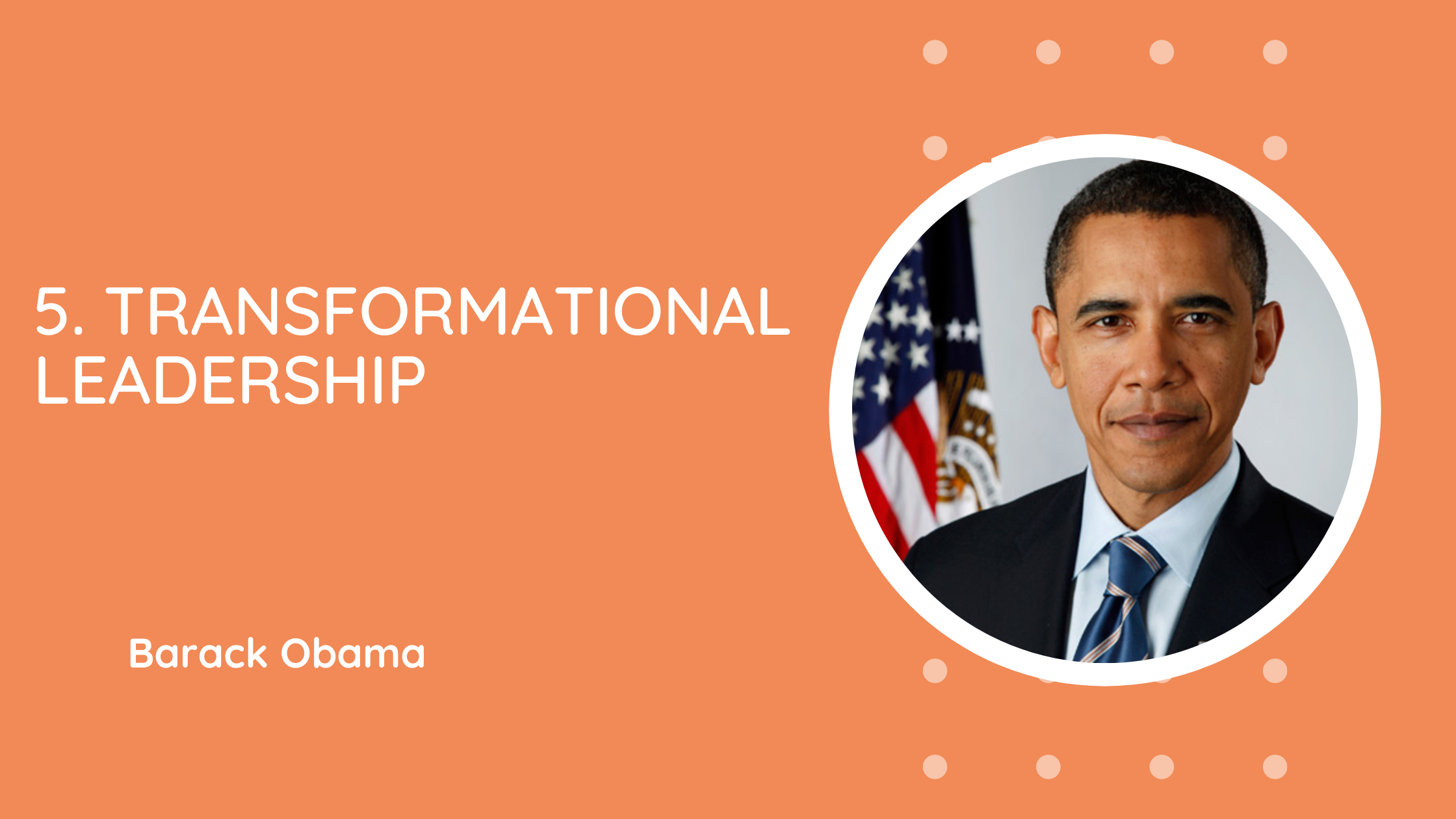In my initial years of joining the management position, I always tried to make sure that my leadership style aligned with the ones of my role models.
I suppose every leader does. Behind our poised, articulate exteriors, we often feel unsure of ourselves. Feeling uncertain sometimes is a given. After all, we have to make hard decisions day in and day out, be it about the team, about the clients, about the product.
And at the end of the day, I can’t help but think, am I living up to be like my idols? Does my style of leadership project even a fraction of the impact that theirs did?
I gathered all this data so we could go through this together. In this article, I want us to find out which leadership traits can be turned into our most valuable and distinguished assets. And then, we shall discuss the various leadership styles and determine which of them aligns with ours the most.
Table of Contents
Top Strengths Of Distinguished Leaders
For me, the word leadership has a very deep meaning. In my viewpoint, leadership stands for rising from the ordinary, attaining new heights, and beating the odds. Seeing that this is such a special role, I have compiled a list of strengths that every distinguished leader should have. Treat this as a checklist so that it is easier for you to point out your leadership style as we move forward.
1. Adaptability
The thumb rule of leadership is flexibility and adaptability. Learning only comes to an adaptive mind. If a leader is not flexible, they would never be able to accept any new ideas or take a new strategic direction. In fact, if a leader lacks adaptability, they might never be able to retain a talented employee with a creative side.
The comfort zone is a zone for the unambitious.
It pays not to be adaptive. This is why adaptability is such a distinct trait of a leader. You must know that only adaptability will let you tap into the creative side of your employees. An ambitious team needs a leader who is open to new ideas and the very concept of change.
2. Engagement
Another great strength for a leader to have is to be engaging. An engaging leader makes people feel included, accepted, and valued. Who wouldn’t want that for their work environment? The leaders who possess this strength tend to uplift the people around them on the regular.
The more you engage the more you empower.
An engaging leader will make you feel heard and encourage you to do better and to be better. The strength of engagement gives one the power to hold the team together, promote productivity using collaboration.
Get collaboration on your fingertips with ProofHub’s chat and comment features. Sign up today!
3. Participation
Now in a broader sense, the strength of participation makes you an advocate for participation for the whole team. And by that I mean, that this strength helps you promote more of an inclusive and collaborative culture.
The 3 tools for leaders are “Participation, persistence, and persuasion.”
This strength allows a leader to include people in the decision-making process and promote the idea of equality and diversity. It helps leaders condition the team culture and inculcate loyalty in their teams This is why the power of participation is high on my list.
4. Problem-solving
“A problem is a chance for you to do your best.” –Duke Ellington
A leader climbs many ladders. The ladder of adaptability, the ladder of empathy, the ladder of persistence, and along the way they pick up problem-solving as their most valuable leadership skills. Problem-solving is an important strength for a leader to have. In fact, it might also be said that it is the most critical skill to have, and yet it is so rare to find.
Where most leaders will try to suppress conflicts, the problem-solver will try to uproot them. No team wants to stand by a leader who does not know how to handle being in a pickle. This strength makes leaders inspiring. And, problem-solving leaders teach their teams very valuable lessons on how to manage challenges no matter how big or small.
5. Persuasive
According to the dictionary, being persuasive means “good at persuading someone to do or believe something through reasoning or the use of temptation.”. Now, most people don’t know this, but being influential and persuasive in leadership is a big plus. It is right for a leader to push people in the right direction when it helps them grow and learn.
Things come easy to him who persuades.
Most team members out there do not have a mindset that is open to criticism or even advice, the only power that works on them is one of a persuasive leader. The people who are persuasive have the ability to mold minds and bend wills. This is why with persuasive leaders, management is easy and the staff is compliant.
6. Daring
Another great characteristic of a distinguished leader is how they are risk-takers, adventurers, and daring overall. This allows them and the team to work on crazy ideas and implement bold strategies. A daring leader is flexible yet persistent, which is the cocktail for success.
You accomplish more when you dare to lead.
These leaders know how to draw outside the lines with style. They believe in the ideas of their team and of their own. A team is full of people with potential who might shy away from presenting their ideas. But, with a leader who is daring, it is easier to present ideas and make mistakes along the way as long as you learn from them.
7. Transparency
“Truth never damages a cause that is just.” –Mahatma Gandhi
Being transparent is an amazing strength. It helps you nurture a loyal workforce where everyone knows to take responsibility for their tasks, successes, and failures. A transparent leader knows how honesty, loyalty, and accountability go hand in hand.
When you are a transparent leader, information just flows in the workplace without any hindrance. It takes very little effort to be on the same page and following the workflow is easy with a leader who shares every detail of the projects, deadlines, and goals.
Now although the list of strengths looks pretty mainstream, I think we often overlook what makes us unique.
Which Leadership Style Represents All Your Strengths?
Now that you know what strengths are important for a leader to have, you might also have figured out how many of these strengths do YOU possess. Based on that you can eventually find out what leadership styles represent your strengths the best. Let’s first figure that out. Before we do that let’s take a look at different styles of leadership first:
A leadership style can be defined as the direction that a leader chooses to undertake in any aspect of management. Aspects of management include identifying problems, inspiring teams, facilitating productivity, etc. Many types of leadership styles that can match your strengths as a leader are:
#1 Bureaucratic Leadership

One word for this leadership style is “efficient”.
What is bureaucratic leadership style?
When you hear the word bureaucratic, a picture of a smooth-running administration comes to mind. This is one style of leadership that helps you get your house in order. In a bureaucratic leadership you will find:
- Every team member has a defined role.
- The environment that a bureaucratic leader creates has a vibe of discipline and function.
- The hierarchy is set and is respected by everyone.
- There is room for creative touch from the team’s side into the projects.
- Within a bureaucratic structure, people work with set guidelines.
- The leader is adaptive and keeps renewing the workflow from time to time.
What are the advantages of being a bureaucratic leader?
The advantage of having a bureaucratic style of leadership is that it doesn’t only help you but also your team to thrive. For instance,
- This type of leadership helps the team gain a sense of job security.
- There is a lot of creative freedom to the team which is good for innovation.
- The air of familiarity helps with employee retention.
- Communication is effective as the roles are well defined.
- Everyone is on the same page due to the established guidelines and rules.
Set custom roles, define deadlines, and assign tasks all on one platform using ProofHub! Sign up for a FREE trial today!
Who is an example of a bureaucratic leader?
A very prominent face among bureaucratic leaders is that of Alfred P Sloan. Appointed as General Motors’ (GM) chairman of the board in 1937, he created a management style where you build the framework that your organization is going to run on for years to come.
This led to an easy and quick expansion of the whole business. Other great examples of bureaucratic leaders would be Harold Geneen, president of ITT, and Steve Easterbrook, the former CEO of McDonald’s.
#2 Autocratic Leadership

Or in other words “absolutism”
What is an autocratic leadership style?
The autocratic or authoritarian leadership style comes with a leader who is ambitious and goal-oriented. These are leaders who would rather impose policies and strategies they feel fit best than take input from their teams on the same. They seem to have the total control of the goals and the projects and leave little to the imagination of the team. Here’s how you can identify an autocratic leader:
- Allow little input from their subordinates.
- Create a stiff and inflexible working environment.
- Provide little to no creative freedom.
- Tend to dictate every aspect of the workflow.
- They can either be micromanagers or be completely aloof.
What are the advantages of being an autocratic leader?
Even though authoritarian leadership culture sounds all bad, there’s a sunny side to everything. It proves to be a very hands-on approach to management. Here are some examples of its benefits:
- The decision making is quick and efficient.
- There is little to no confusion regarding the tasks and deadlines.
- This leadership style seems to work well with small teams.
- Leaves little room for office conflicts.
Who is an example of an autocratic leader?
There are leaders for whom the “My way or the highway.” approach works best. Even though history has shown us autocratic leaders like Adolf Hitler, King Henry III, Napoleon Bonaparte, and Queen Elizabeth I, I believe that we can find a modified form of this leadership in the workplaces around us still today.
#3 Democratic Leadership

In one word, “Inviting”.
What is democratic leadership style?
The democratic leader, also known as the participative leader, is one who listens. In this leadership style:
- The leader invites the team’s views, opinions, and ideas.
- Acceptance and inclusion play a major role in democratic leadership.
- The leader seems to be driven by goals and also the best interest of the employees.
- Everyone is encouraged to grow as an individual.
- The leader recognizes efforts and gives due appreciation through public announcements or through a shoutout on their project management tool.
- Decision-making is a collaborative effort.
What are the advantages of being a democratic leader?
The popularity of democratic leaders is justified when you know about the impact they have on their teams. This is what happens under democratic leadership:
- The team gets to have opinions and voices.
- These leaders create an environment where it is easy for employees to pitch ideas
- The input of the employees is valued which gives way to high morale.
- Problem-solving is easier and there is little friction between the employees.
- Commitment, trust, and loyalty are a common trait.
- Motivation and job satisfaction accompany this sort of management.
Who is an example of a democratic leader?
For me, the most noticeably impactful democratic leader will always be Indra Nooyi. As the CEO and chairman of PepsiCo, Indra Nooyi has transformed the organization by providing a human touch to the work environment. As a leader who cares so genuinely about her workforce, she is also seen making deals with other big-name corporations like Tropicana and Gatorade.
Other examples of democratic leaders include Ginni Rometty, the CEO of IBM, and Bill George, a senior executive at Honeywell and Litton Industries.
#4 Laissez-Faire Leadership

One word for this type of leadership is “easy-going”
What is Laissez-Faire leadership style?
Laissez-Faire leaders play by delegation. The “let go” leadership is one where the team is in charge of the decision making. It is the direct opposite of authoritative leadership. With this style of leadership, the team is given solutions and suggestions, and they take charge of the decisions as a group.
The characteristics of this leadership on the workforce include:
- Freedom to make decisions and take chances.
- All tools for leadership are provided by the leader.
- The team is left to figure things out for themselves.
- Leaders take responsibility for the actions of the team.
What are the advantages of being a Laissez-Faire leader?
There are plenty of advantages to being a Laissez-Faire leader, for example:
- There is a great learning curve for employees.
- The leader gets to delegate in an environment that is devoid of stress.
- Keeps the teams motivated and open to new avenues of learning strategies.
- Creative freedom for the team with a chance to work where making mistakes is how you learn.
Give your team a view of their individual tasks and goals. Give ProofHub a try!
Who is an example of a Laissez-Faire leader?
Steve Jobs is a prominent example among all the people who have followed this leadership style. He was one of those leaders who simply stated what they wished to see in the product and the “how” part was left to the technical team to figure out.
As a result, the brand was a massive success with the most competent technical team the world had ever seen.
#5 Transformational Leadership

One word to describe transformational leadership: “uplifting”.
What is transformational leadership style?
The transformational leader is both a guiding hand and a nurturing one to their employees. In this style, leaders are found to create a vision for their team by defining goals and guiding them on the way to said goals with a lot of encouragement and inspiration.
Here are some characteristics of a transformational leader:
- They consider themselves as a part of the team.
- They manage themselves and their expectations before they manage their teams.
- They know how to take responsibility for risks and for their performance of their teams.
- They like to think of targets as collective goals and employees as collaborative teams.
What are the advantages of being a transformational leader?
A transformational leader transforms and inspires change. They are responsible for so much growth of the employees and of the type of work their team does. For example:
- With transformational leaders, everyone finds it easy to collaborate.
- There is a strong sense of team culture.
- It creates an environment where ideas, whether good or bad, are accepted.
- The employees are allowed to grow in an environment that is perceptible to change.
Who is an example of a transformational leader?
For me, Barack Obama is one of the most impactful transformational leaders out there. He inspired change with humility and respect in ways that no one before him could.
Other honorable mentions for examples of transformational leaders include Mahatma Gandhi.
